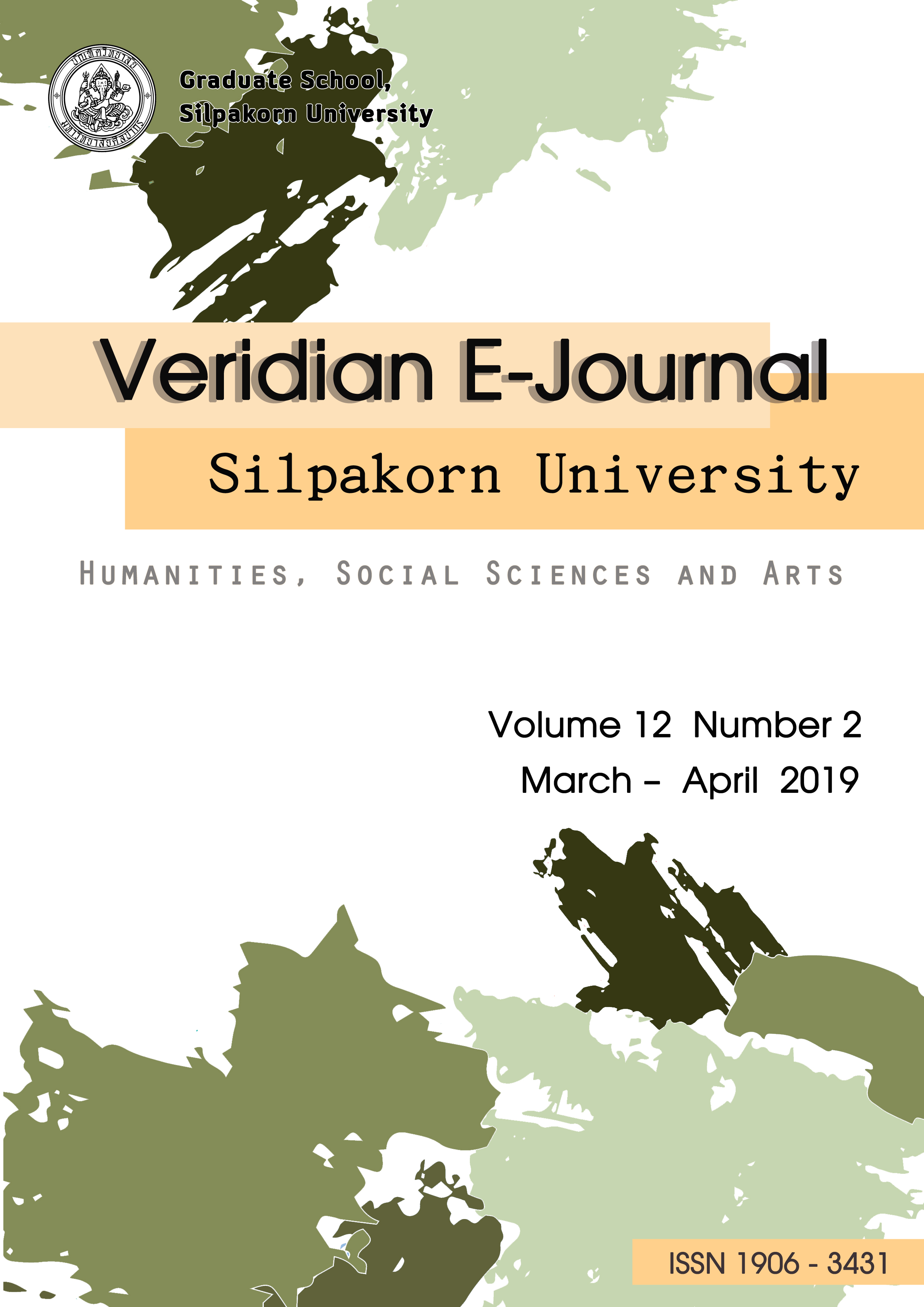An Innovation Model for International Sport Events City of Buriram Province, Thailand
Main Article Content
Abstract
This research aims to study an innovation model for international sport events city of Buriram Province, Thailand. The qualitative medthod was applied by observation, in-depth interviews, focus groups, and workshops.The results showed that the city's creative products include in the international sporting events consisting of: 1. Core Products which are attraction that include sport, historical and cultural attractions 2. Supporting Products which are activities that include festivals, events, national, international and local sport events, accommodation and restaurants 3. Expected Product which are access to tourist attractions 4. Augmented Product which are ancillary services. There are facilities for tourists such as postal, hospital, insurance planning and waste management. 5. Potential Product which are travel package, travel program and other types of tourism. As summary, the researchers give examples of tangible innovations and innovation created by all sectors that related to the development of Buriram province into the city of sport tourism which is a guideline for Buriram sport tourism and national, international activities throughout the year (Guidelines for Burirum Sport Tourism) and the study also found that in addition of the Guidelines Event Calendar, the innovation of this research can also be extended to a variety of issues.
Article Details
References
Buhalis, D. (2000). Marketing the competitive destination in the future. Tourism Management, 21(1), 97-116.
Chalong Sri Pimol Sompong. (2005). Planning and Development of Tourism Market. Bangkok: Faculty Humanities, Kasetsart University
Dickman, S. (1996). Tourism: An Introductory Text, 2nd ed., Australia: Hodder Education.
Kjell Gronhaug and Geir Kaufmann. (1988). Innovation: A cross-disciplinary perspective. Norwegian University Press, Oslo: pp. 529.
Joseph Schumpeter. (2004). Identifying innovation in surveys of services: a Schumpeterian perspective. Volume 33, Issue 3, April 2004, Pages 551-562.
Kotler, Bowen, and Makens. (2006). Marketing for Hospitality & Tourism, 5th Edition. Northwestern University, University of Houston and Wake Forest University.
Ministry of Tourism and Sports. (2017). National Tourism Development Plan No. 12, 2017-2020. Ministry of Tourism and Sports
Manoohong, R., and Dankittikul, C. (2018). Urban Planning Concepts for Promoting Pattaya as A Sport Tourism Destination. Veridian E-Journal, Silpakorn Universiy. Volume 11 Number 3 September-December 2018. 1717-1731
Office of the Permanent Secretary, Ministry of Tourism and Sports (2016). Tourism Economic Report Review: October 6 - December 2016, pp. 68-70.
Ruskin H. 1987. Selected views on socio-economic aspects of outdoor recreation, outdoor education and sport tourism. In Proceedings of the International Seminar and Workshop on Outdoor Education, Recreation and Sport Tourism Garmise M (ed.). Emmanuel Gill Publishing: Natanya, Israel.
Siwapallop, P. (2005). Tourist Satisfaction of Tourism Products in Phuket, Pang Nga and Krabi. Faculty of Hospitality and Tourism, Prince of Songkla University.
Walailuck Noipayak (2009). Tourism innovation. Discovered on December 20, From journal
Website: https://www.etatjournal.com/upload/221/9_TravelInnovation.
William W. Keller and Richard J. Samuels. (2003). Crisis and Innovation in Asian Technology. Cambridge University.
Worapong Phoomborplub (2018). Sport Tourism advantage on Thai Southern Border Province. Veridian E-Journal, Silpakorn University. Volume 11 Number 2 May-August 2018. 1793-1811
Zarya Chumjit. (2016). The 21st Century of Sport Tourism Electronic Booklet Development. Tourism Authority of Thailand.
